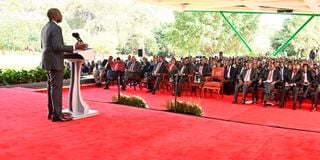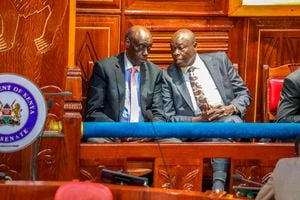Parastatal reform idea good

President William Ruto addresses parastatal chairpersons and Chief Executive Officers at State House, Nairobi.
What you need to know:
- Most parastatals in Kenya have failed to live up to their mandate.
- Many state-owned entities have not followed good corporate governance.
Kenya has more than 450 parastatals, or state-owned entities (SoEs), both commercial or not.
Parastatals are necessary for effective performance by the government; they are responsible for certain elements of public service delivery.
The share of parastatals and SoEs in the top 500 global firms has tripled in the past two decades and they are strategically positioned in critical sectors. The public sector has invested heavily in them.
At the end of 2022, it had invested over 11 per cent of the global market capitalisation of listed SoEs, more than $10.6 trillion, and in some cases over 30 per cent in listed firms’ equity.
Loss-making
Their roles include ensuring a level playing ground in the global markets and meeting national sustainability goals.
The government has reportedly spent more than Sh3.7 trillion on loss-making SoEs but got a paltry Sh5 billion in return. This should be reversed.
First, it advances the parastatal reforms report, which highlighted the need to merge some SoEs to make them more viable economically and functionally.
Secondly, most of them have duplicating functions or do not live up to their mandate.
Creation of jobs
Thirdly, many have not keenly followed good corporate governance, forward-thinking leadership or embraced the key performance indicators (KPIs) to increase their ability to effectively offer public services, provide good societal outcomes (innovation, creation of jobs and high contribution to GDP).
Fourth, parastatals should be at the forefront of utilising locally available resources, including finances and talents through strategic investments.
Fifth, parastatals are influential growth sources vital for future economic freedoms. The World Bank examined more than 76,000 SoEs in over 91 countries and found that their contribution to gross domestic product (GDP) averaged 17 per cent.
The “2023 Economic Survey” report shows Kenya’s GDP grew by 4.8 per cent in 2022. So, if our SoEs added just seven percentage points to GDP growth, we would hit 11.48 per cent, hence pass the Kenya Vision 2030 GDP target per year of 10 per cent.
Dr Giti is an urban management, public-private partnerships (PPPs) and environment specialist. [email protected]. @danielgiti





